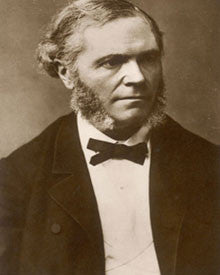
(1822 - 1890)
Franck's early career as a child prodigy and teenage virtuoso pianist-composer, ruthlessly promoted by an over-exploitive father, did not so much hasten his development as retard it. His father did at least see to it that he had a thorough musical training, at the Conservatoires of Liège and Paris, and he was able to break away from overbearing parental influence when he found refuge with the family of his future wife in his early twenties. He did find a congenial niche as organist of the recently completed basilica of Ste Clotilde in 1858, however, and 13 years later he was appointed professor of organ at the Conservatoire, as a result of which he adopted French citizenship as a Belgian from birth. The list of pupils who attended his organ-improvisation classes at the Conservatoire or went for private lessons to his home in the boulevard St Michel was so numerous and included musicians of such outstanding ability – Chausson, Dukas, Duparc, d’Indy – that over the course of the years he changed the musical climate in Paris. As the climate in French music changed, in the last few years of his life Franck’s creative genius flourished. Classical chamber-music forms long neglected or under-represented in France found new life in the expressive fervour and the integrated thematic organisation of such ‘cyclic’ constructions as his Piano Quintet (1879), Violin Sonata (1886) and String Quartet (1889).
Cesar Franck Composition Timpani and Percussion Requirements
Le Chasseur Maudit
Timpani + 4 percussion
Tubular bells, orchestral bass drum, clash cymbals, triangle
__________________________________________________________________________________
